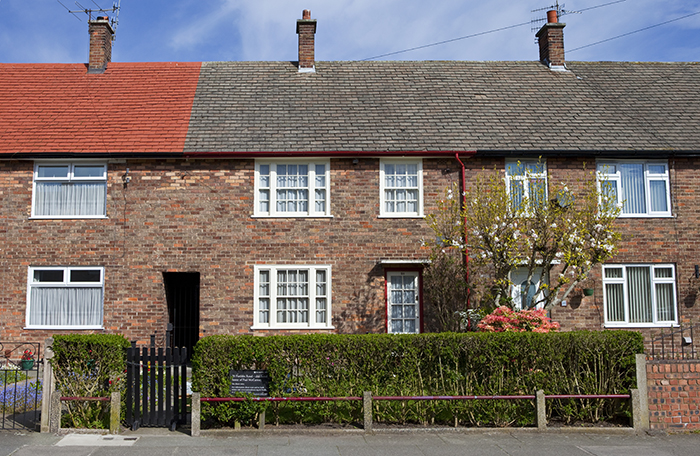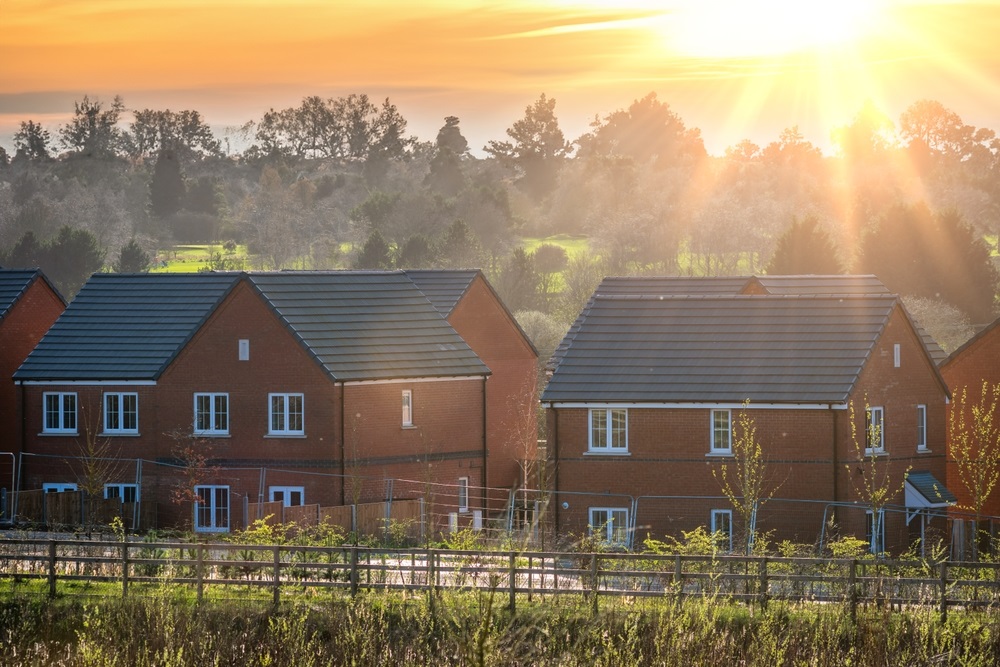House prices grow, supply of new homes is insufficient, more people are looking to buy but cannot afford it: in the current housing crisis history has something to teach us. Vanya Damyanova investigates Housing moved centre stage in UK politics in recent months with the General Election bringing the issue into focus. It was time […]
House prices grow, supply of new homes is insufficient, more people are looking to buy but cannot afford it: in the current housing crisis history has something to teach us. Vanya Damyanova investigates
Housing moved centre stage in UK politics in recent months with the General Election bringing the issue into focus. It was time for people to ask questions and hold the outgoing government to account for its achievements and failures.
The past five years have seen a rise in first-time buyer numbers thanks in part to government-supported schemes such as Help to Buy; but affordability has declined, the population has increased and there are not enough homes to accommodate everybody. While some of these changes stem from recent events such as the financial crisis, the root cause of others dates further back in time.
Looking back to the past hundred years, could provide insight about current events. Some of the key issues to tackle in the housing crisis now started developing decades ago. And this is not surprising given that 84 per cent of existing housing stock in England was built before 1984 and 38 per cent was built before 1944.
Historic changes in tenure
The changes in the tenure mix over the decades have a direct link to government policies.
In the years before 1915, there was no regular state intervention in the property market but afterwards authorities got more involved. Up until then, the market was determined by the movement of workers who flocked to the cities where there were more job opportunities. The urbanisation created more demand for housing in the cities, resulting in cramped and unsanitary conditions. The authorities acted on that, trying to improve the living situation for all working people.
The First World War (1914-18) triggered the first big housebuilding wave in the UK in the last century. The “homes fit for heroes” initiative of Prime Minister David Lloyd George (1916-22) saw local authorities collectively build an average of 50,000 homes per year during the inter-war years.
A snapshot of the tenure mix in England at that time (1914-18): Around 10 per cent of people were living in their own homes, 89 per cent were private renters and 1 per cent were renting from local authorities.
The next defining moment for the property market that triggered a shift in the tenure mix was in 1979. In the decades leading up to that year, a considerable proportion of people has moved from the private rented sector to own homes with the percentage of owner-occupiers growing to over 40 per cent by the 1960s. Meanwhile, the proportion of people living in new social housing has increased to a little less than a quarter. But by the end of the 1970s people were growing increasingly dissatisfied with the living conditions in housing provided by local authorities and many had the desire to purchase their own property.
The Right to Buy scheme introduced by Prime Minister Margaret Thatcher (1979-90) was a major game changer for the market. It was one of the key drivers of the subsequent expansion in homeownership to its highest ever level of 69 per cent by 1999. While the proportion of home owners reached its peak, the share of private-rented housing shrunk to its lowest level of 10 per cent by the turn of this century.
The Right to Buy scheme at the time of its launch was the only way to achieve a considerable change in tenure towards more people owning rather than renting. However, many experts say it has contributed to the current housing shortage. This is because after the scheme was introduced the council housing was bought out by tenants as well as aspiring private landlords and the property stock held by councils ran low. Later governments did not make special provisions for building new council housing to replace the old and this widened the gap between market demand and supply.
After the peak in homeownership in the 1990s its share in the tenure mix has started going back again, while the share of private renting is once again expanding. Key drivers of that change are the declining affordability, stricter mortgage lending rules, constantly growing house prices and the bottleneck in supply.
How the tenure mix changed from the 1950s until 2011 (ONS data):
- The growth rate in homeownership accelerated in 1953 and by 1971 the number of owners was equal to the number of renters (private and social).
- From that moment on, ownership continued to grow and hit an all-time high (69 per cent) in 2001.
- Since then it has been on the decline, reaching 64 per cent in 2011.
- The rental sector was influenced by policies following the World Wars with the proportion of social housing renters changing from 1 per cent in 1918 to the peak of 31 per cent in 1981.
- After a significant drop in the period 1950-1999, growth in the private rented sector returned and in the first decade of the 21st century the percentage of households renting increased in all English regions and in Wales. London had the highest proportion of renters, accounting for 50.4 per cent of households in the region.
Policies that changed homeownership and renting in the past century
The ‘Increase of Rent and Mortgage Interest Act’ was part of government efforts to raise living standards for workers in the cities in 1915. It was mainly focused on restrictions affecting private landlords and introduced rent controls in the private rented sector.
As a next step, the state obliged local authorities to provide social housing. This came in the form of the ‘Housing, Town Planning, &c. Act’ of 1919.
House building increased after the First World War and following the Second World War the focus was on rebuilding what was destroyed and that required further investments in social housing.
In the years between 1919 and 1971 the share of homeownership increased to the same size as the proportion of rented housing (private and social).
The ‘Housing Act’ of 1980, which introduced the Right to Buy scheme, was the state’s answer to the growing demand for ownership and the public’s increasing discontent about social housing conditions.
Rent controls were ended in the ‘Housing Act’ of 1988 this made letting more attractive to private landlords. This legislation also allowed local authorities to transfer properties in their possession to housing associations and registered social landlords. In an additional step, the government relieved local authorities of the obligation to hold housing stock with the ‘Local Government and Housing Act’ of 1989. Letting by housing associations started to grow in the 1980s and by 2009 had surpassed the share of housing let by local authorities.
In the last decade of the 20th century the proportion of homeowners in England and Wales remained relatively stable but there was a significant change in the rental sector with the number of private renters surging while the number of social tenants declined significantly.
Housing legislation during the first ten years of the 21st century was defined by the financial crisis. The rules for mortgage lending were tightened and this coupled with the aftermath of the crisis — the loss of jobs and declining incomes, dealt a serious blow to the property market.
In April 2014, the government imposed additional criteria for mortgage lending in the form of the Mortgage Market Review (MMR).
Most recently, the newly-elected Conservative government (in May 2015) has announced the extension of the Right to Buy scheme to include housing association tenants but many doubt how successful it would be this time around. The current lack of stock in the market has been identified as the main issue to tackle in the housing crisis.
On the other hand, a policy that seems to get large approval from all corners of the industry is the extension of the Help to Buy scheme until 2020 and the addition of the Help to Buy: ISA to launch this autumn.
What the new government has committed to do is provide 200,000 starter homes for first-time buyers.
A look at NHBC’s index measuring first-time buyers’ ability to buy since the 1970s to present time provides a good illustration of the impact the recent crisis had on the market.
Housebuilding
A much needed and currently very scarce commodity, housing in Britain has had its ups and downs over the past hundred years. Hovering somewhere above the 100,000 new homes in the first decade of the 20th century, housebuilding stopped during the First World War. Then it picked up again between the end of the First and the start of the Second World War, during which time it leapt to over 350,000 new homes.
After the end of World War II, housebuilding dropped off to almost nothing until it started climbing up again during the 1950s. It reached its peak in the decade 1960-70. The highest ever number of new homes built in the UK, 413,700, was recorded in 1968. During the 60s and 70s, there was a surge in construction of tower blocks. The expectation was that people would enjoy high-rise living but the projected success of this type of housing never happened. People complained about poor design and technical deficiencies, and at the end tower blocks proved to be social and financial failures. After its heyday, house building fell, barely reaching 200,000 new homes per year since the 1980s until the present time. 2012/13 was the weakest year for house building since the 1920s with only 135,117 new homes constructed in that year.
NHBC home registration figures, which are a good gauge for the performance of the house building industry, for 2014 show registrations have reached a seven-year high but are still below pre-crisis levels. The average number of registrations for the past four decades is 153,000 per year, while in 2014 it stood at 145,174.















